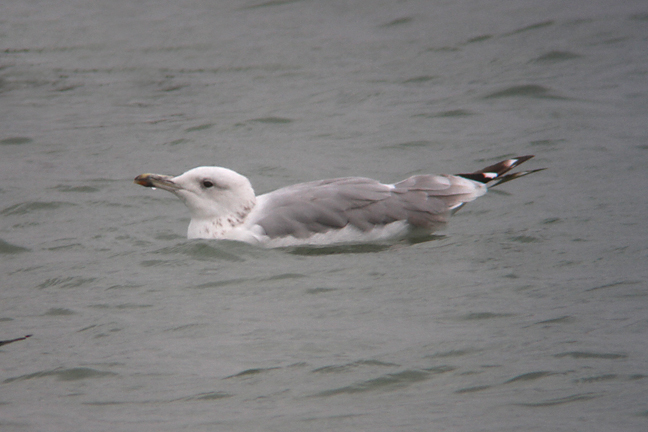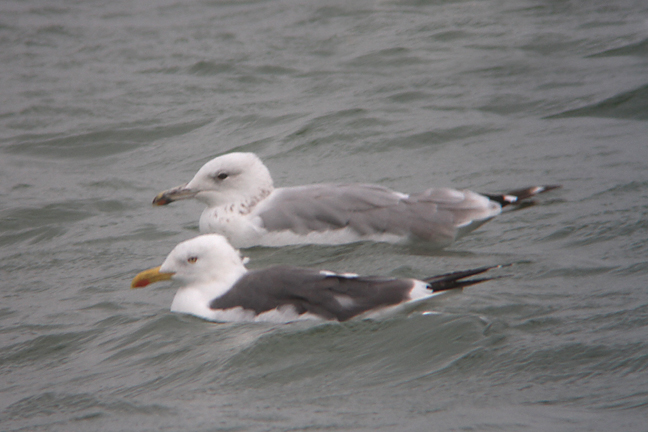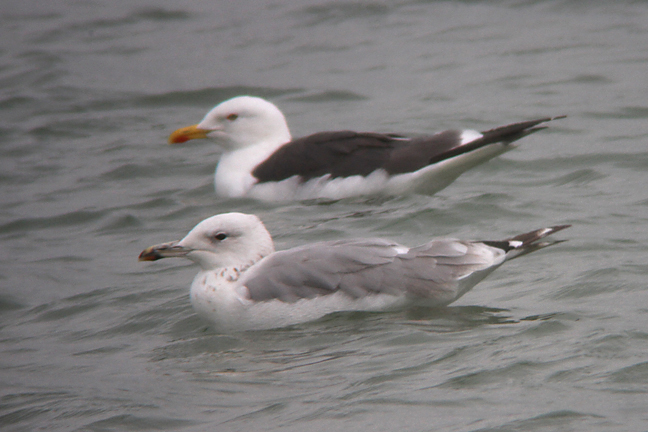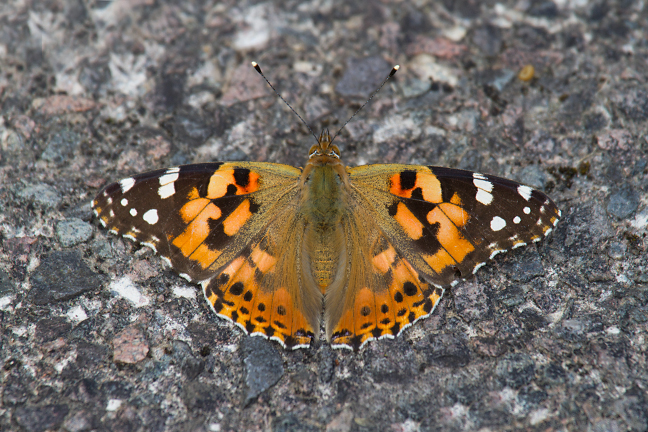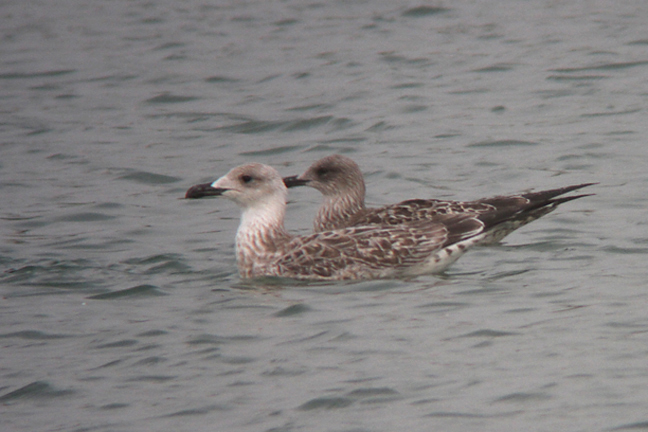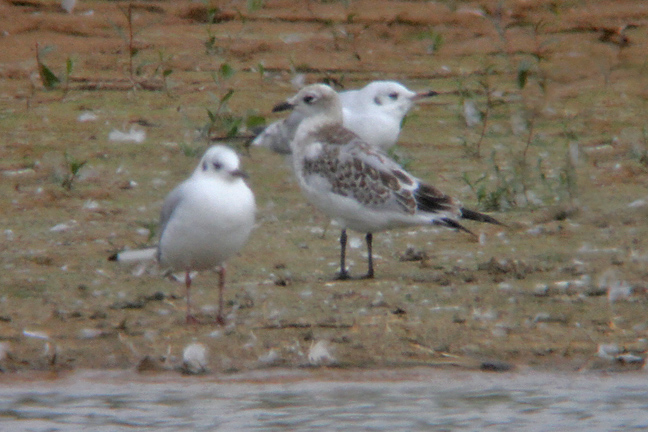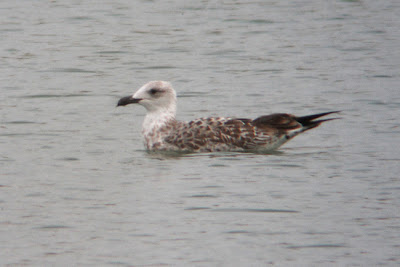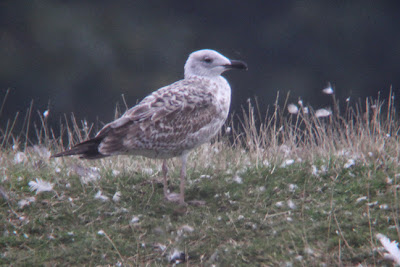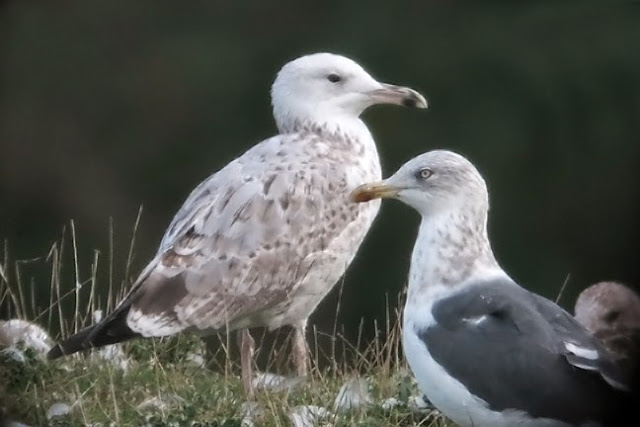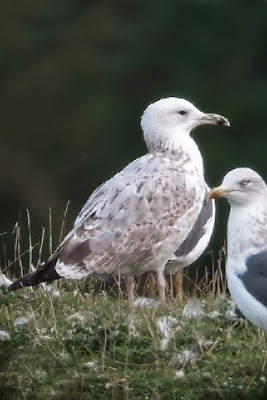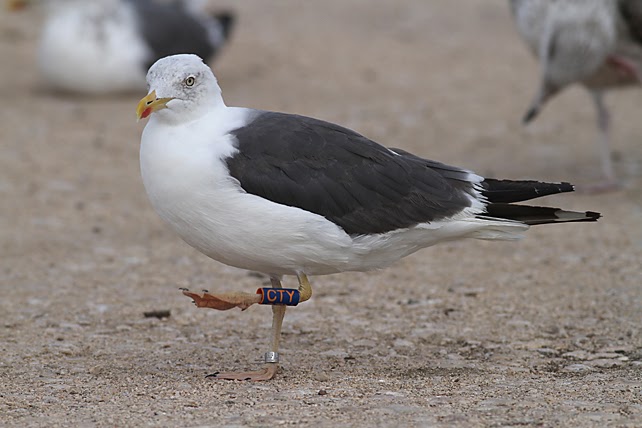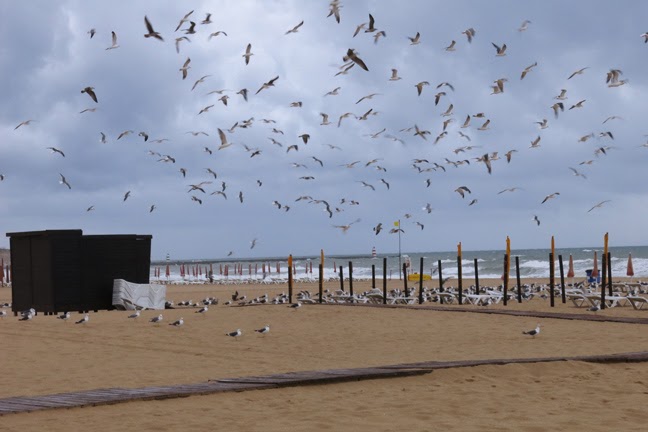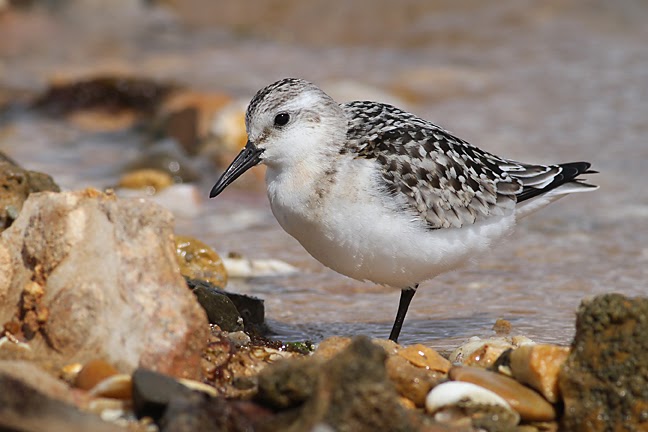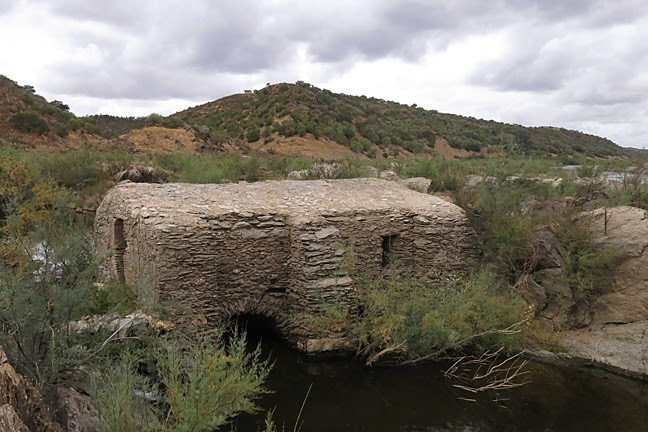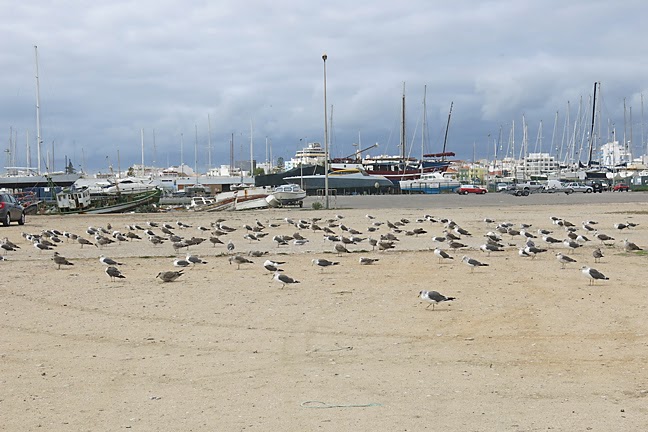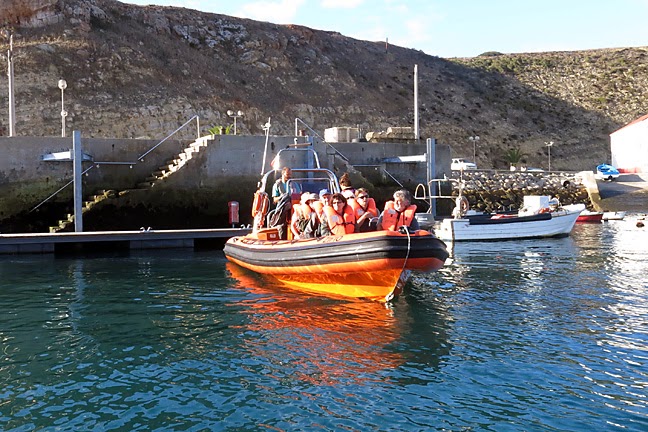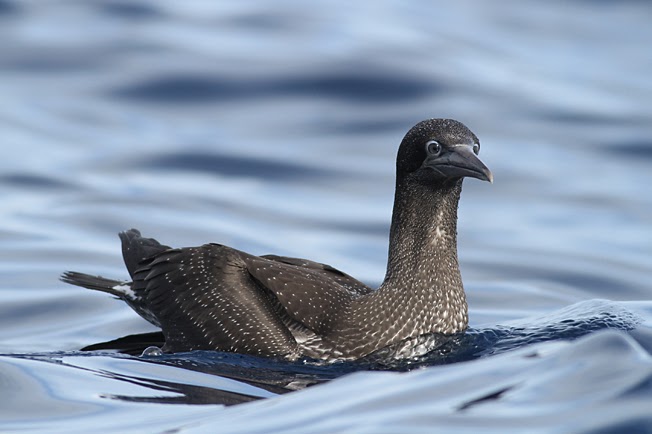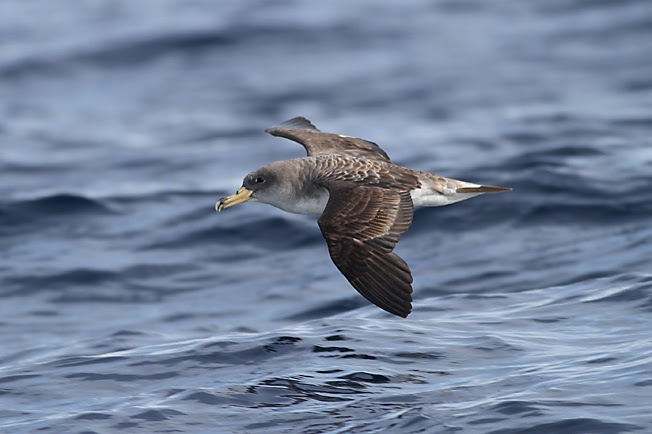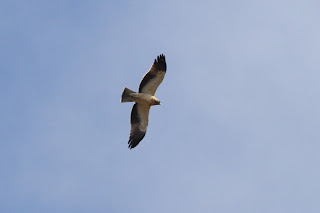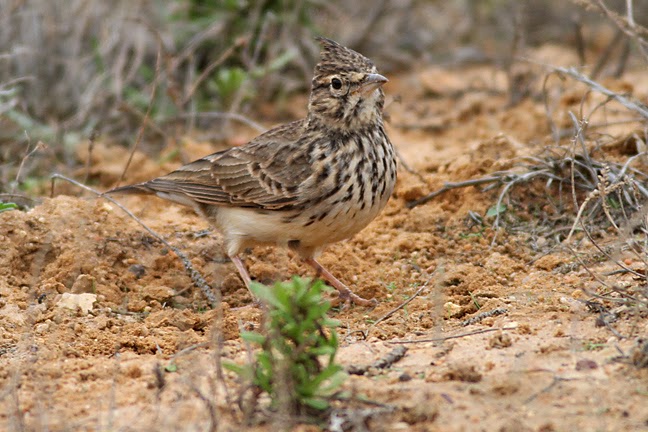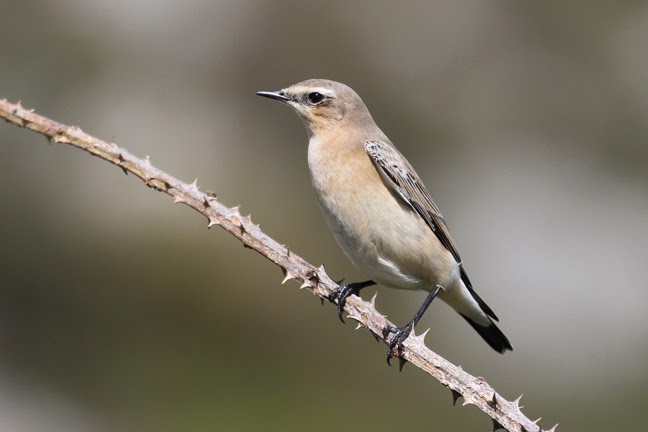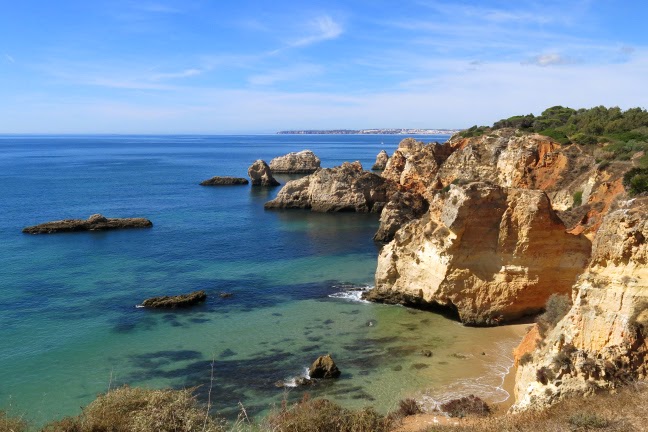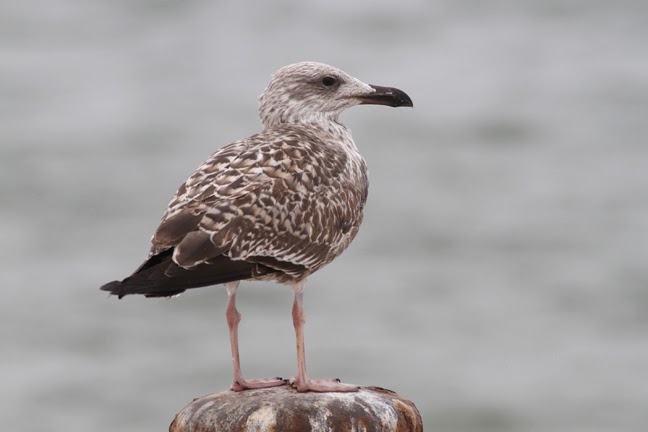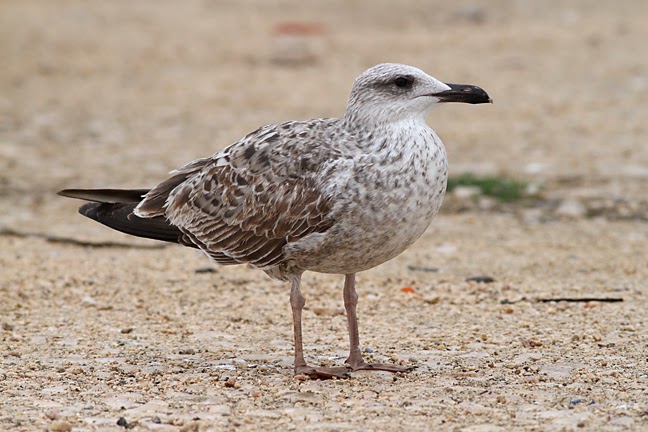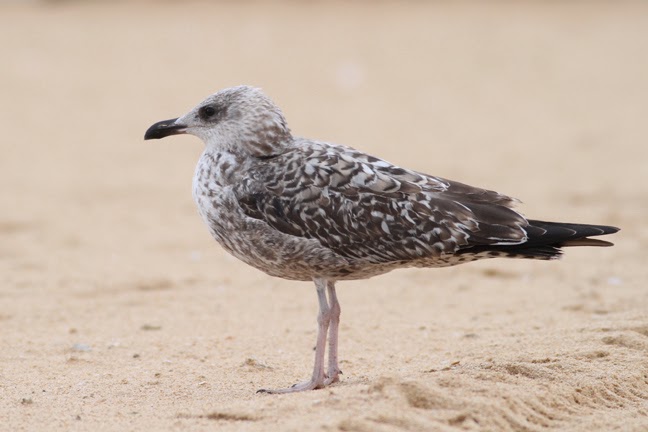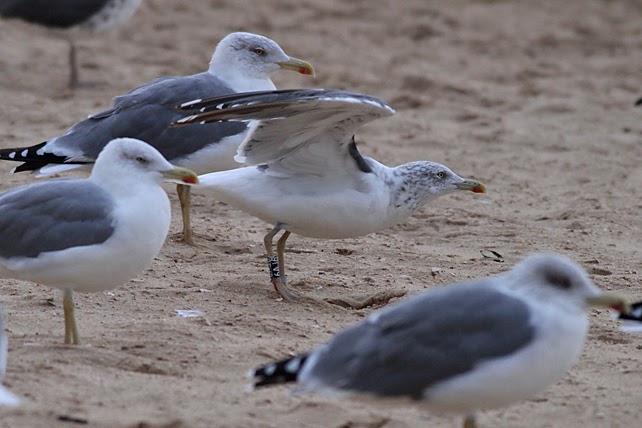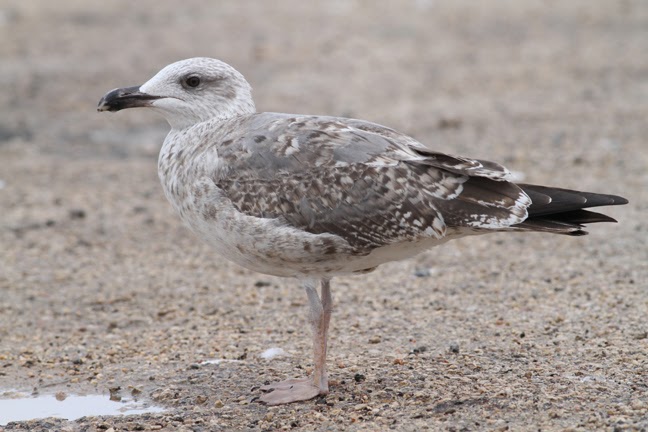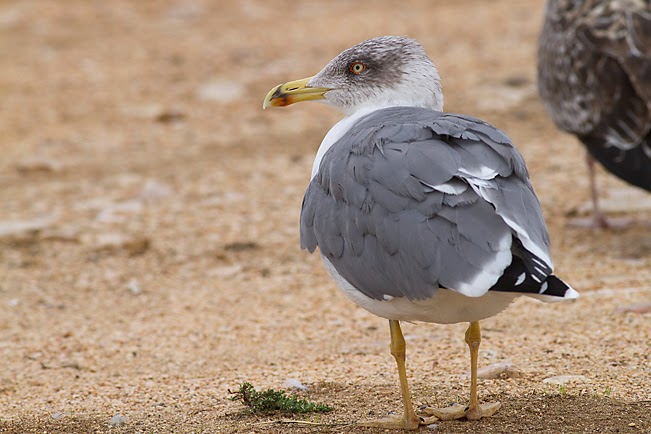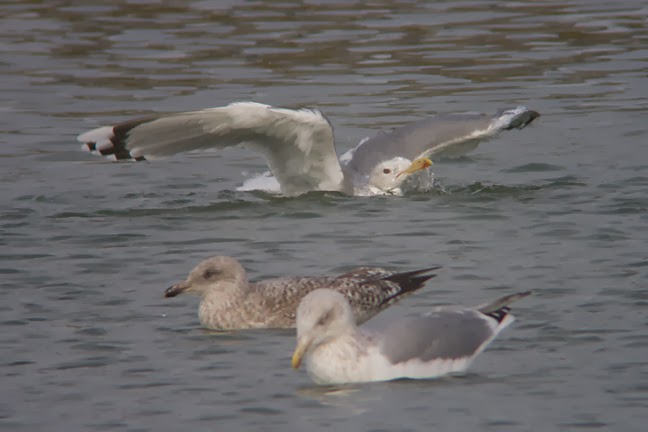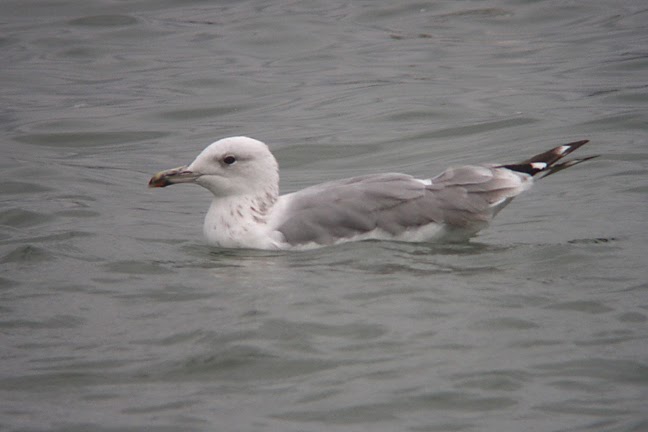Last year I found a Yellow-legged Gull at Shawell A5 Lagoons, Leicestershire, which showed extensive head streaking and a primary pattern that resembled that of an Azorean Gull Larus michahellis atlantis, also known as Atlantic Gull. In the end I concluded that this gull was not an L. m. atlantis, but more likely a Yellow-legged Gull Larus michahellis from a western population due to its upper parts being too pale.
I was, however, intrigued by the gull at Shawell and other sightings of probable L. m. atlantis seen in the UK, so I decided to visit the Algarve in Portugal to study Yellow-legged Gulls Larus michahellis present there in autumn. I based myself at Praia da Rocha, close to the fishing harbour at Portimao. This site is excellent, as it is easy to study gulls at close quarters.
During my second visit to the fishing harbour, on October 1st, I spotted a very distinctive gull, which I immediately felt was a good candidate for being an Azorean Gull L. m. atlantis![]() |
Azorean Gull L. m. atlantis
|
Its mantle colour was mid-way between the Yellow-legged Larus michahellis and Lesser Black-backed Gulls Larus Fuscus that were close by for comparison. The grey was nearest to that of the LBBG sub-species graellsii, but unique in tone to any of the other gulls present. The head was densely streaked on the crown and ear coverts, but became less dense below the nape. The streaks were much darker than L. michahellis even though some of them were heavily streaked on the head.
It had the solid robust and short legged jizz of an Azorean Gull L. m. atlantis. These features are all obvious in the photographs. Its eyes are large and pale, which is also a good feature. The bill appears different to Yellow-legged Gull L. michahellis being thicker slightly shorter and more 'chisel' tipped due to the steep gonys angle.
The primary pattern matches the most often quoted for L.m atlantis. A single mirror on P10 and no mirror on P9. P5 has a very thick black band and P4 shows a dark mark on the outer web. The dark mark on P4 is larger than would be expected for L. michahellis. The extent of black on P8 and 9 is also greater than typical for Yellow-legged Gulls. It is true, however, that there has been no complete study of the primary pattern of Yellow-legged Gulls from the western population to see if there is a marked difference between L. michahellis and L.m atlantis. There are some older studies which point to L.michahellis from the western end of its range having a similar primary patterns to L.m atlantis. However, these birds don't show the full set of characters associated with L.m atlantis. The underside of the secondaries showed a light grey wash. I only noticed this when the bird stretched its wings while on the ground, but it is just visible in the photo below showing the underwing.
![]() |
| Primary Pattern on the Upperwing |
![]() |
| Mirror on P10 |
Preening the Underwing
![]() |
Underwing
|
![]() |
| Azorean Gull L. m. atlantis |
There appears to be some controversy over whether Azorean Gulls actual leave the Azores and whether birds from Maderia and the Canary isles resemble the gulls from the Azores. As far as I can see there is nothing to suggest it is a hybrid and everything to suggest it is an Azorean Gull. The name Atlantic Gull is perhaps a more accurate name, as it may be difficult to prove which island this bird actually came from.
The extent of the streaking on the back of the head is interesting. In some photographs it appears to finish sharply at the back of the ear covets and across the top of the nape, but in others the streaking, although finer, can be seen to extend down to the base of the neck. The extent of the dark head streaking is obviously variable click HERE for a group photo of Azorean Gulls showing different head patterns. The main thing is that the gull at Portimao shows head streaking outside the range of Yellow-legged Gull and the streaking is different to that shown by Lesser Black-backed Gull - the streaks are finer but darker and not blotchy.
I have already asked a couple of people whose views on gull ID I respect and the replies were encouraging:
"I think a bird like that seen anywhere would be called an atlantis, based on grey tone, head streaking and wing pattern".
"Wow, what a bird. To me everything about this bird says Azorean Gull – plumage and structure".
As always, I welcome any comments.









